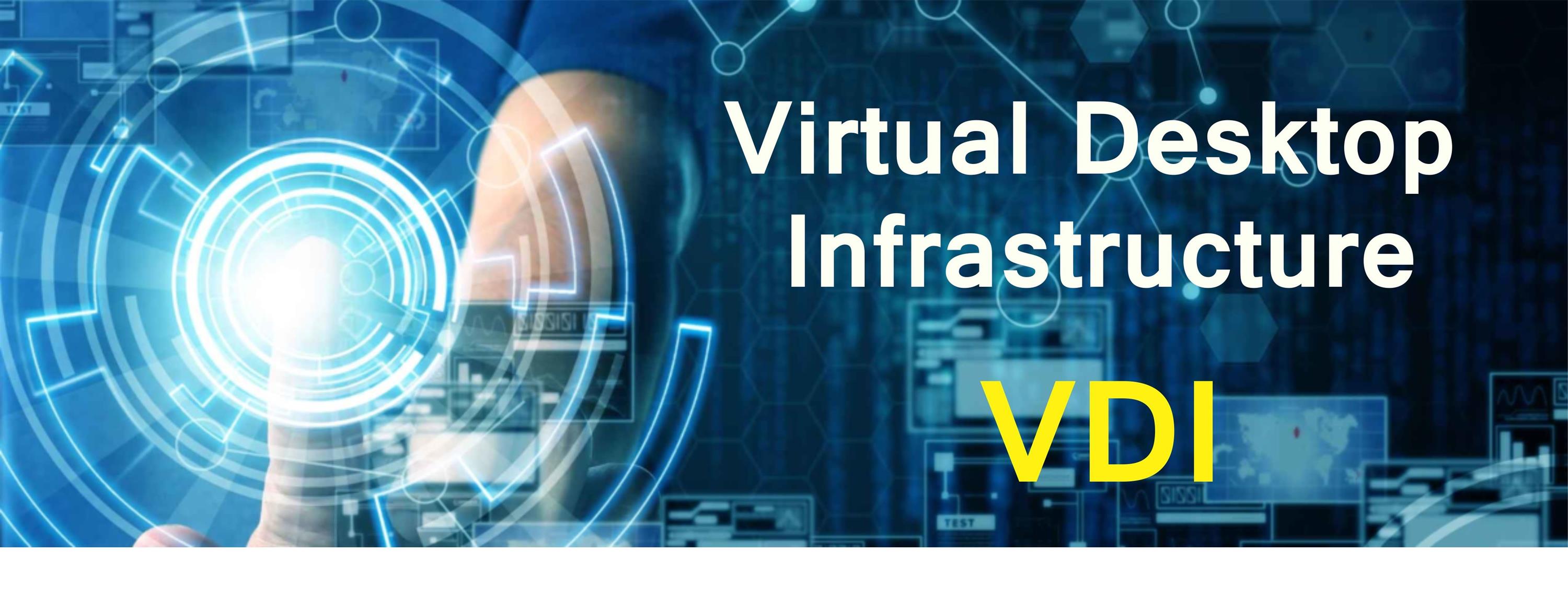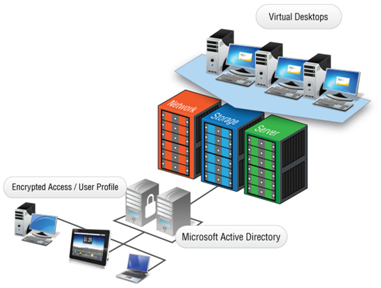
What is VDI (Virtual Desktop Infrastructure)?
Virtual desktop infrastructure (VDI) is a technology that refers to the use of virtual machines to provide and manage virtual desktops. VDI hosts desktop environments on a centralized server and deploys them to end-users on request.
How does VDI work?
In VDI, a hypervisor segments servers into virtual machines that in turn host virtual desktops, which users access remotely from their devices. Users can access these virtual desktops from any device or location, and all processing is done on the host server. Users connect to their desktop instances through a connection broker, which is a software-based gateway that acts as an intermediary between the user and the server.
VDI can be either persistent or nonpersistent. Each type offers different benefits:
- With persistent VDI, a user connects to the same desktop each time, and users are able to personalize the desktop for their needs since changes are saved even after the connection is reset. In other words, desktops in a persistent VDI environment act exactly like a personal physical desktop.
- In contrast, nonpersistent VDI, where users connect to generic desktops and no changes are saved, is usually simpler and cheaper, since there is no need to maintain customized desktops between sessions. Nonpersistent VDI is often used in organizations with a lot of task workers, or employees who perform a limited set of repetitive tasks and don’t need a customized desktop.
Why VDI?
VDI offers a number of advantages, such as user mobility, ease of access, flexibility and greater security. In the past, its high-performance requirements made it costly and challenging to deploy on legacy systems, which posed a barrier for many businesses. However, the rise in enterprise adoption of hyperconverged infrastructure (HCI) offers a solution that provides scalability and high performance at a lower cost.
What are the benefits of VDI?
Although VDI’s complexity means that it isn’t necessarily the right choice for every organization, it offers a number of benefits for organizations that do use it. Some of these benefits include:
- Remote access:VDI users can connect to their virtual desktop from any location or device, making it easy for employees to access all their files and applications and work remotely from anywhere in the world.
- Cost savings:Since processing is done on the server, the hardware requirements for end devices are much lower. Users can access their virtual desktops from older devices, thin clients, or even tablets, reducing the need for IT to purchase new and expensive hardware.
- Security:In a VDI environment, data lives on the server rather than the end client device. This serves to protect data if an endpoint device is ever stolen or compromised.
- Centralized management:VDI’s centralized format allows IT to easily patch, update or configure all the virtual desktops in a system.

What is VDI used for?
Although VDI can be used in all sorts of environments, there are a number of use cases that are uniquely suited for VDI, including:
- Remote work:Since VDI makes virtual desktops easy to deploy and update from a centralized location, an increasing number of companies are implementing it for remote workers.
- Bring your own device (BYOD):VDI is an ideal solution for environments that allow or require employees to use their own devices. Since processing is done on a centralized server, VDI allows the use of a wider range of devices. It also offers better security, since data lives on the server and is not retained on the end client device.
- Task or shift work:Nonpersistent VDI is particularly well suited to organizations such as call centers that have a large number of employees who use the same software to perform limited tasks.
What is the difference between VDI and desktop virtualization?
Desktop virtualization is a generic term for any technology that separates a desktop environment from the hardware used to access it. VDI is a type of desktop virtualization, but desktop virtualization can also be implemented in different ways, such as remote desktop services (RDS), where users connect to a shared desktop that runs on a remote server.
What is the difference between VDI and virtual machines (VMs)?
Virtual machines are the technology that powers VDI. VMs are software “machines” created by partitioning a physical server into multiple virtual servers through the use of a hypervisor. (This process is also known as server virtualization.) Virtual machines can be used for a number of applications, one of which is running a virtual desktop in a VDI environment.

How to implement VDI?
When planning for VDI deployment, larger enterprises should consider implementing it in an HCI environment, as HCI’s scalability and high performance are a natural fit for VDI’s resource needs. On the other hand, implementing HCI for VDI is probably not necessary (and would be overly expensive) for organizations that require less than 100 virtual desktops.
In addition to infrastructure considerations, there are a number of best practices to follow when implementing VDI:
- Prepare your network: Since VDI performance is so closely linked to network performance, it’s important to know peak usage times and anticipate demand spikes to ensure sufficient network capacity.
- Avoid under provisioning: Perform capacity planning in advance using a performance monitoring tool to understand the resources each virtual desktop consumes and to make sure you know your overall resource consumption needs.
- Understand your end-users’ needs: Do your users need to be able to customize their desktops, or are they task workers who can work from a generic desktop? (In other words, is your organization better suited to a persistent or nonpersistent VDI setup?) What are your users’ performance requirements? You’ll need to provision your setup differently for users who use graphics-intensive applications versus those who just need access to the internet or to one or two simple applications.
- Perform a pilot test: Most virtualization providers offer testing tools that you can use to run a test VDI deployment beforehand; it’s important to do so to make sure you’ve provisioned your resources correctly.
